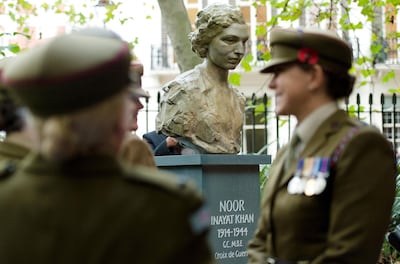An unlikely British spy is to join an illustrious roster of Britons to be commemorated with an English Heritage blue plaque.
Noor Inayat Khan was recruited to Winston Churchill’s elite Special Operations Executive secret agents under the code name “Madeleine”. In 1943, she was dispatched to Nazi-occupied France to single-handedly run a network of spies across Paris.
After being betrayed, Ms Khan was captured by the Gestapo and tortured for 10 months. Remarkably, she refused to divulge any information that might compromise Allied operations. In September 1944, aged 30, she was executed by firing squad at Dachau concentration camp.

Her heroism was recognised in 1949 when she was posthumously given the George Cross - the UK’s highest civilian honour for bravery. But as the years passed, her memory slipped from public consciousness in Britain - despite being annually commemorated in France where she was awarded the Croix de Guerre.
This changed in 2011 when a bronze bust was erected in Gordon Square Gardens close to the Bloomsbury house in London where Ms Khan grew up.
The memorial came after a campaign led by her biographer, Shrabani Basu. Nine years on, the efforts of Ms Basu are now responsible for the awarding of the famous English Heritage plaque.
"It is fitting that Noor Inayat Khan is the first woman of Indian origin to be commemorated with a blue plaque," Ms Basu told Sky News. "As people walk by, Noor's story will continue to inspire future generations."
Two years ago, a group of British MPs made an unsuccessful attempt to make Ms Khan the new face of the £50 note. Instead, the Bank of England decided to honour British mathematician and Enigma codebreaker Alan Turing.
Ms Khan's plaque will provide solace to the thwarted parliamentarians and will be unveiled on English Heritage’s Facebook page at 7pm UK time on Friday. The organisation is seeking to increase the number of females in the scheme after coming under criticism for a stark gender imbalance.

